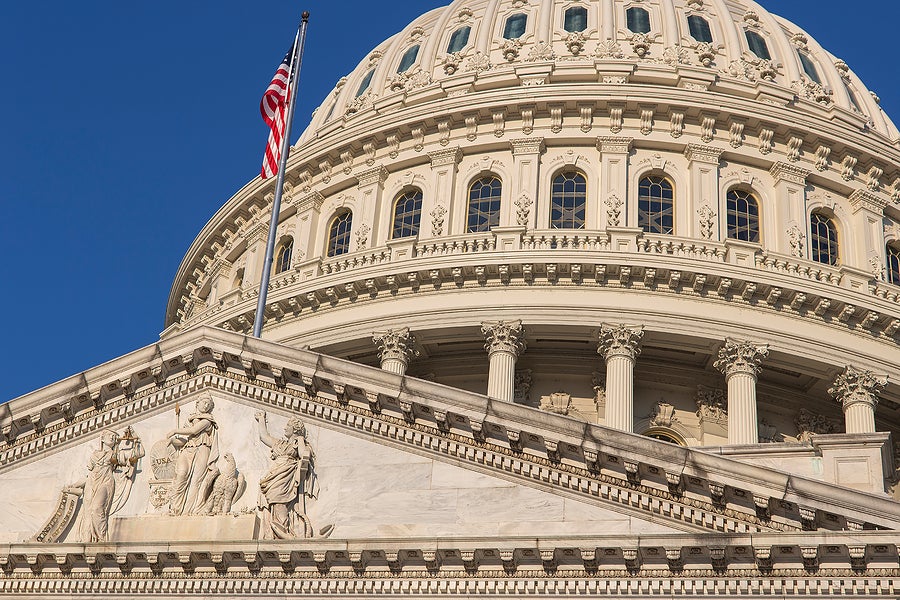[Editor’s Note: On September 30, Congress approved a last-minute measure to fund the government through November 17, 2023, which temporarily averted a government shutdown. CCF experts will continue to monitor the funding debate and its impact on health care programs and the people who rely on them.]
Sadly, we’ve been here before and it’s highly likely that we’ll be here again. Where? Staring a government shutdown in the face and wondering what it means for federal health care programs like Medicaid and the Children’s Health Insurance Program (CHIP) and the tens of millions of low-income people who rely on them.
Let’s go over the basics first. Federal Medicaid and CHIP funding will continue to flow normally to states to provide Medicaid and CHIP benefits to individuals and families and to pay providers and health plans. But during a government shutdown, federal employees across all branches of government are classified as either “essential” or “nonessential.” “Essential” workers have to continue working during the shutdown, while “nonessential” workers are furloughed. Both groups go without pay, though typically Congress provides back-pay once the government re-opens. It’s up the to the Office of Management and Budget (OMB) to outline the shutdown plan government-wide, and this happens often enough that it even has a frequently asked questions document outlining the principles OMB applies when crafting its plan. Last week, the Department of Health and Human Services (HHS) posted a contingency plan for a lapse in appropriated funds, indicating that 58 percent of HHS workers would continue to work and 42 percent would be furloughed. For the Centers for Medicare and Medicaid Services (CMS), about half of its workforce would be furloughed.
The federal workers at CMS tasked with making Medicaid and CHIP payments to states will continue to work and dollars will continue to flow to states. CMS staff funded by dedicated sources, such as those at the Center for Medicare and Medicaid Innovation and those working on federal marketplace operations, will also continue to work. However, work beyond keeping the cash flowing is more uncertain. For example, states with pending state plan amendments or 1115 demonstration requests may find the process slows down considerably. Other technical assistance requests may also be stalled, especially if multiple agencies or departments are invovled. This is problematic any time of the year, but would be worse now because states are often waiting for CMS approvals in the fall to start new programs or make programmatic changes effective January 1. The longer a shutdown lasts, the harder it is for CMS to work through the backlog the shutdown created and catch up.
This year, there could be a far more harmful impact. CMS and states are currently in the midst of possibly the greatest Medicaid administrative task since the program’s inception (the transition to Modified Adjusted Gross Income for determining eligibility in 2014 is the closest we’ve seen in recent history). Readers of our SayAhhh! Blog know what we’re talking about – the Medicaid unwinding. After a few years of pausing routine Medicaid renewals to help keep people covered during the COVID-19 pandemic due to the temporary continuous coverage protection, states are now in the midst of processing fresh renewals for the more than 90 million people enrolled. And the process is off to a disturbing start, with millions being disenrolled so far and procedural terminations accounting for the large majority of disenrollments. It’s likely that most of those losing their Medicaid coverage for procedural reasons remain eligible. Just last week, CMS announced that more than half of states have been processing ex parte renewals incorrectly and must pause further procedural disenrollments and go back and reinstate everyone who lost coverage inappropriately, including 500,000 kids and other Medicaid beneficiaries. But the ex parte problem is likely only one contributor to these high rates of procedural terminations.
So, what will a shutdown mean for the Medicaid unwinding? State eligibility workers won’t be impacted, so renewals (and any required reinstatements) will continue to proceed as scheduled during a government shutdown. During a partner education webinar this week, CMCS Senior Policy Advisor Kate Ginnis assured stakeholders that unwinding work will continue. But CMS may have a harder time keeping up with proper oversight or enforcement actions once the shutdown takes effect. What could this mean? Certainly any big enrollment events or other promotional activities will have to wait. We’re hopeful that the September data releases related to state renewals and disenrollment will still be published, but a protracted shutdown could cause delays in publishing other data. Technical assistance to help states address unwinding problems and adopt mitigation strategies could slow. Efforts to determine if there are further renewal processes that are out of compliance with federal requirements could be limited. For example, last week’s announcement about incorrect ex parte processes should be followed by sharing more information about state mitigation strategies, working with states to ensure that impacted beneficiaries are reinstated properly with adequate notice to beneficiaries, and conducting oversight to ensure that the ex parte processes have been fixed before procedural terminations can recommence. But government funding may run out at the end of this week before this important followup work has taken root.


